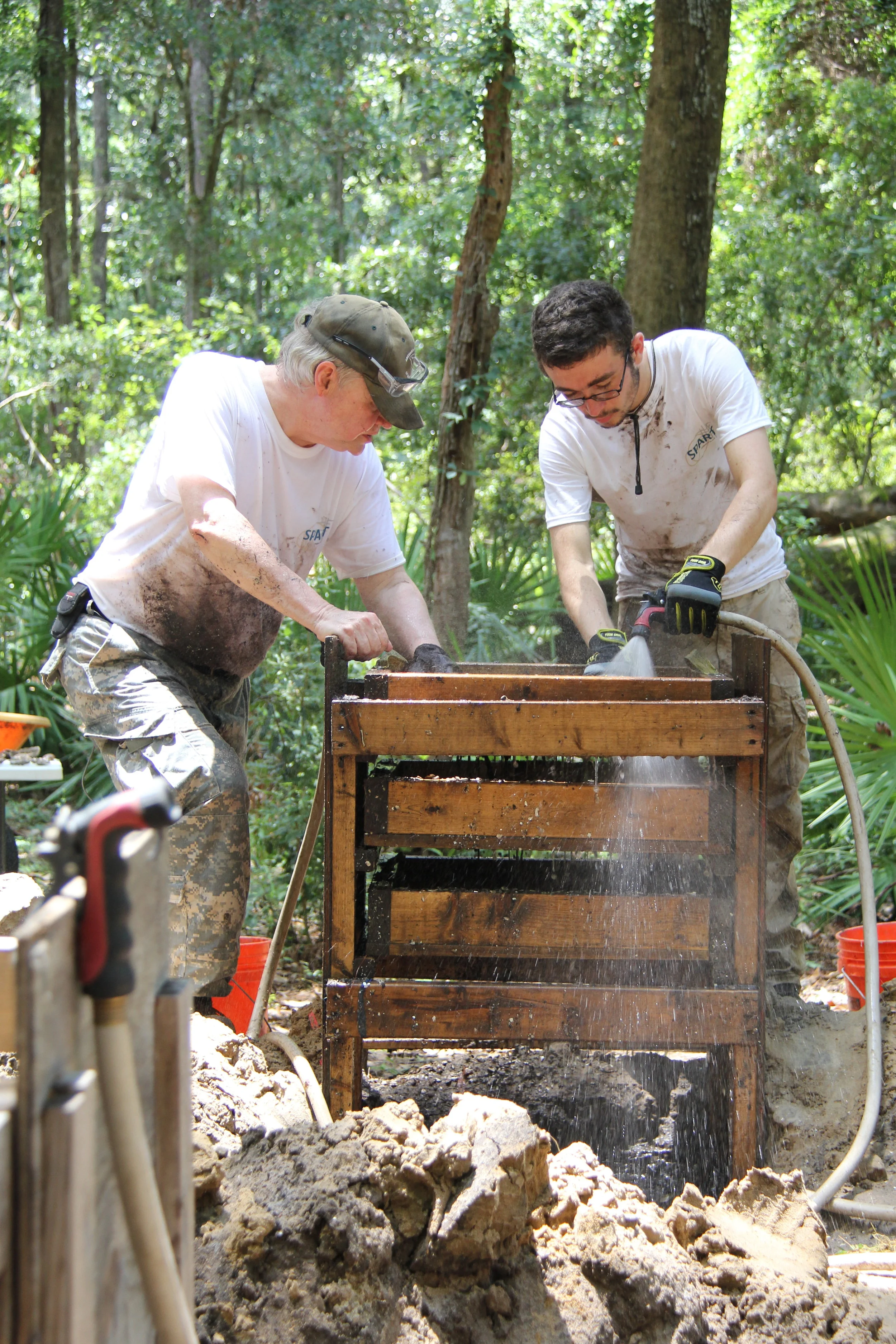Hidden in the Sea Pines Forest Preserve on Hilton Head is a 3,500-year-old Native American archaeological treasure.
An archeological team excavates the Sea Pines Shell Ring to better understand what it was used for thousands of years ago
Whenever we visit my parents on Hilton Head Island, South Carolina, we like to explore the forest preserve. As we wander the trails, we cross boardwalks over pitch-black bogs covered in neon green flora. We’ll see a line of horseback riders plodding along on an excursion from nearby Lawton Stables. Families throw lines in the water in the hopes of catching a fish for dinner.
And if we head between Lake Joe and Lake Thomas, we’ll come upon the Indian Shell Ring, as we did one day a couple of years ago. It’s usually a quiet spot under the cover of trees — but on this day, we stumbled upon the midst of an archeological dig.
“Our best guess is that the ring was a place where people lived year-round and would occasionally hold large-scale gatherings in which they feasted on shellfish and other foods.”
The man in charge of the excavation is Matthew Sanger, assistant anthropology professor and co-director of the public archaeology program at Binghamton University in New York. He came right over and told us all about the mysterious shell ring. He obviously has a passion for the project.
Matthew Sanger, a professor at Binghamton University in New York, leads the project
What first drew you to the Sea Pines Shell Ring?
I have worked at other shell rings located in Georgia and had heard about the one at Sea Pines. There are at least 50 known shell rings spread across the coast between South Carolina and through the Gulf Coast to Mississippi.
The Sea Pines Shell Ring is well known for being one of the most accessible (others are often on uninhabited islands or well off the beaten path) and being one of the best preserved (many others are under parking lots, have been disturbed or destroyed by rising sea levels, etc.).
A team of students gets hands-on experience unearthing artifacts at the Sea Pines Shell Ring
Tell us a bit about how the project works.
I bring a crew of students to Hilton Head every summer as well as occasionally during our other breaks (Winter and Spring Breaks are the most common). The crew works with me over a month or so as we excavate the site in search of clues to how the ring formed, who lived there, etc.
Where will the artifacts end up?
We bring all of the artifacts back to Binghamton with us at the end of the summer. We then spend the rest of the year processing and analyzing the artifacts. We will hold onto the artifacts for the next few years, but plan on ultimately transferring them to a local institution in South Carolina.
What’s the timeline?
We are currently planning on continuing to do excavations at the Sea Pines Shell Ring for the next two to four years, depending on funding and what we find.
Hurricanes Matthew and Irma caused Hilton Head Island to be evacuated in recent years. How did the hurricanes affect the project?
We were very lucky that the ring survived both hurricanes unscathed. We had some downed trees, but really almost no damage at all.
Archeologists attempt to solve the mystery of the shell ring and the house that might have once been situated inside it
What’s your best guess about what the ring was used for?
So far, our best guess is that the ring was a place where people lived year-round and would occasionally hold large-scale gatherings in which they feasted on shellfish and other foods.
The Sea Pines Shell Ring is one of the smallest shell rings, so it may have been a year-round home to a small group of families — perhaps only four to six households.
But on occasion, the ring might have hosted events that brought together dozens, perhaps more than 100 people.
What type of people lived in this area at the time of the shell ring?
Roughly 3,500 years ago, when the Sea Pines Shell Ring was forming, the South Carolina coast was inhabited by Native Americans. It is impossible to characterize these Native Americans as belonging to a particular modern tribe, but their progeny likely includes members of a wide number of tribal groups, including the Yemessee, Escamacu, Edisto, Coosa, Pee Dee and Sewee, to name a few.
What was the biggest surprise you found on the dig?
Last summer we came across what looks to be the remains of a house inside of the ring. The evidence is very ephemeral — which is not surprising, considering that the house has been gone for more than 3,000 years. But we came across some stains in the soil that look like where a few walls might have been located as well as an area that looks like it could have been a floor. We are returning to further excavate this area this coming summer to see if this is indeed an ancient home.
Note: For the past couple of years, the Sea Pines Shell Ring has been off limits due to hurricane cleanup in the forest preserve. –Wally


























